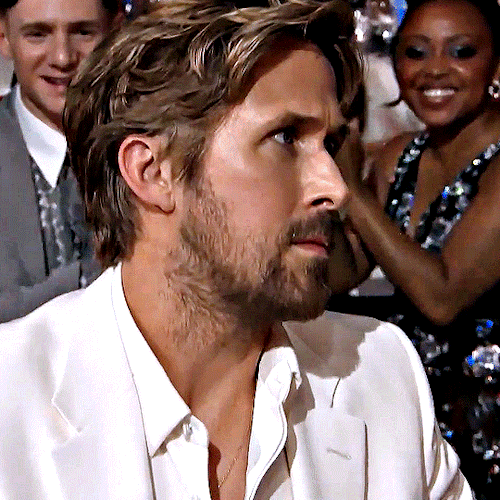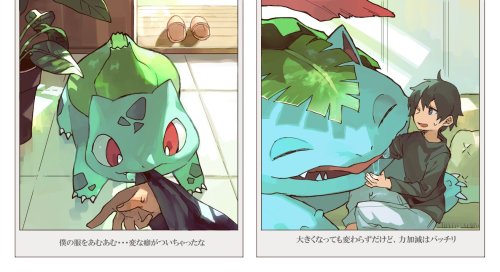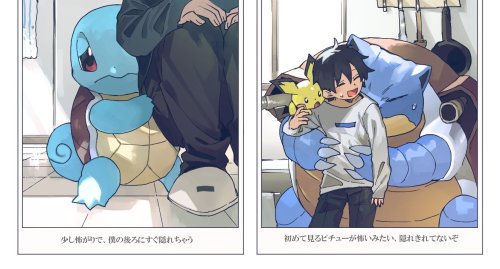See The Universe In A New Way With The Webb Space Telescope's First Images
See the Universe in a New Way with the Webb Space Telescope's First Images
Are you ready to see unprecedented, detailed views of the universe from the James Webb Space Telescope, the largest and most powerful space observatory ever made? Scroll down to see the first full-color images and data from Webb. Unfold the universe with us. ✨
Carina Nebula

This landscape of “mountains” and “valleys” speckled with glittering stars, called the Cosmic Cliffs, is the edge of the star-birthing Carina Nebula. Usually, the early phases of star formation are difficult to capture, but Webb can peer through cosmic dust—thanks to its extreme sensitivity, spatial resolution, and imaging capability. Protostellar jets clearly shoot out from some of these young stars in this new image.
Southern Ring Nebula

The Southern Ring Nebula is a planetary nebula: it’s an expanding cloud of gas and dust surrounding a dying star. In this new image, the nebula’s second, dimmer star is brought into full view, as well as the gas and dust it’s throwing out around it. (The brighter star is in its own stage of stellar evolution and will probably eject its own planetary nebula in the future.) These kinds of details will help us better understand how stars evolve and transform their environments. Finally, you might notice points of light in the background. Those aren’t stars—they’re distant galaxies.
Stephan’s Quintet

Stephan’s Quintet, a visual grouping of five galaxies near each other, was discovered in 1877 and is best known for being prominently featured in the holiday classic, “It’s a Wonderful Life.” This new image brings the galaxy group from the silver screen to your screen in an enormous mosaic that is Webb’s largest image to date. The mosaic covers about one-fifth of the Moon’s diameter; it contains over 150 million pixels and is constructed from almost 1,000 separate image files. Never-before-seen details are on display: sparkling clusters of millions of young stars, fresh star births, sweeping tails of gas, dust and stars, and huge shock waves paint a dramatic picture of galactic interactions.
WASP-96 b

WASP-96 b is a giant, mostly gas planet outside our solar system, discovered in 2014. Webb’s Near-Infrared Imager and Slitless Spectrograph (NIRISS) measured light from the WASP-96 system as the planet moved across the star. The light curve confirmed previous observations, but the transmission spectrum revealed new properties of the planet: an unambiguous signature of water, indications of haze, and evidence of clouds in the atmosphere. This discovery marks a giant leap forward in the quest to find potentially habitable planets beyond Earth.
Webb's First Deep Field

This image of galaxy cluster SMACS 0723, known as Webb’s First Deep Field, looks 4.6 billion years into the past. Looking at infrared wavelengths beyond Hubble’s deepest fields, Webb’s sharp near-infrared view reveals thousands of galaxies—including the faintest objects ever observed in the infrared—in the most detailed view of the early universe to date. We can now see tiny, faint structures we’ve never seen before, like star clusters and diffuse features and soon, we’ll begin to learn more about the galaxies’ masses, ages, histories, and compositions.
These images and data are just the beginning of what the observatory will find. It will study every phase in the history of our Universe, ranging from the first luminous glows after the Big Bang, to the formation of solar systems capable of supporting life on planets like Earth, to the evolution of our own Solar System.
Make sure to follow us on Tumblr for your regular dose of space—and for milestones like this!
Credits: NASA, ESA, CSA, and STScI
More Posts from Nonex-on-the-way and Others
In the first gif, you can see the loading icon like "say sike right now". Moreover, if an issue is dumbed down to literally "show me with the dolls" kind of explanation and people don't get it... Yikes


RYAN GOSLING "I'm Just Ken" wins Best Original Song at the 29th Annual Critics' Choice Awards (January 14, 2024)
Love this show so much lmao 🤣




Growing up with your starters
Artist: esasi8794 / Twitter
i’ve mentioned this here before, but it will remain one of the most ideologically influential experiences of my life: when i was in fifth grade i did a report on post traumatic stress as manifested in veterans of the vietnam war, and my father did me the huge favor of connecting me w/ a vietnam vet friend of his who was diagnosed with PTSD, assuring him that while i was only ten i was bright and curious and he should be as honest with me about his experience as possible.
i remember entering his office with my tape recorder, sitting in a chair that was too big, and asking him questions about war, and his life after war, while swinging my legs over the edge of the chair. i remember being very, very quiet as he spoke of pulling the car over on the highway for fear of crashing when his hands would shake uncontrollably in response to song on the radio or a smell that he couldn’t be sure was real or sense-memory. and of ruined relationships and anger and american hypocrisy.
and i also remember that was the day i learned what “valor” meant. he used “valor” in a sentence and i didn’t know that word, and when i asked him to explain “valor” he became very quiet. and i can’t remember precisely what he said, if he ever offered me the dictionary definition or not, but i do remember him looking very sad, and saying something about our country’s idea of “valor”, and also something about a broken promise. and there was an edge to his words that i couldn’t parse at the time that i would later come to understand was bitterness, that he sounded bitter.
to this day i can’t hear or read the word “valor” without seeing sunlight coming through his office window at a slant, close-to-sunset light, and feeling the kind of quiet, confused, completely internalized panic a child feels when they sense that a grown up is trying very hard not to weep in their presence.
commentators giving me kudos for good driving and they also read the "about me" on my registration sheet. i didnt think they would do that
This video made me cry so I wanted to put it here
-
 john-erby liked this · 1 month ago
john-erby liked this · 1 month ago -
 boudicca-of-iceni liked this · 2 months ago
boudicca-of-iceni liked this · 2 months ago -
 silt-review reblogged this · 2 months ago
silt-review reblogged this · 2 months ago -
 silt-review liked this · 2 months ago
silt-review liked this · 2 months ago -
 been-here-since-76 liked this · 4 months ago
been-here-since-76 liked this · 4 months ago -
 azure-aeon-soulstar liked this · 5 months ago
azure-aeon-soulstar liked this · 5 months ago -
 walker-light liked this · 6 months ago
walker-light liked this · 6 months ago -
 walker-light reblogged this · 6 months ago
walker-light reblogged this · 6 months ago -
 annabs7x7 liked this · 6 months ago
annabs7x7 liked this · 6 months ago -
 annagok8n liked this · 6 months ago
annagok8n liked this · 6 months ago -
 emaadsidiki liked this · 7 months ago
emaadsidiki liked this · 7 months ago -
 form696 liked this · 9 months ago
form696 liked this · 9 months ago -
 raleighrambles liked this · 9 months ago
raleighrambles liked this · 9 months ago -
 wingsr liked this · 10 months ago
wingsr liked this · 10 months ago -
 linhasespectrais liked this · 10 months ago
linhasespectrais liked this · 10 months ago -
 the-honey-dukes reblogged this · 10 months ago
the-honey-dukes reblogged this · 10 months ago -
 johmawilson reblogged this · 11 months ago
johmawilson reblogged this · 11 months ago -
 johmawilson liked this · 11 months ago
johmawilson liked this · 11 months ago -
 thegirlsinthecity liked this · 11 months ago
thegirlsinthecity liked this · 11 months ago -
 vetbeatriz liked this · 11 months ago
vetbeatriz liked this · 11 months ago -
 meissama liked this · 1 year ago
meissama liked this · 1 year ago -
 urwashiiii liked this · 1 year ago
urwashiiii liked this · 1 year ago -
 sep-temb-er liked this · 1 year ago
sep-temb-er liked this · 1 year ago -
 ace-of-ducks reblogged this · 1 year ago
ace-of-ducks reblogged this · 1 year ago -
 sam5701 reblogged this · 1 year ago
sam5701 reblogged this · 1 year ago -
 sam5701 liked this · 1 year ago
sam5701 liked this · 1 year ago -
 lime2342 reblogged this · 1 year ago
lime2342 reblogged this · 1 year ago -
 ooogggeeeiiiddd420 liked this · 1 year ago
ooogggeeeiiiddd420 liked this · 1 year ago -
 rizafujizare reblogged this · 1 year ago
rizafujizare reblogged this · 1 year ago -
 jollyqueenface liked this · 1 year ago
jollyqueenface liked this · 1 year ago -
 glitchylaptop reblogged this · 1 year ago
glitchylaptop reblogged this · 1 year ago -
 glitchylaptop liked this · 1 year ago
glitchylaptop liked this · 1 year ago -
 izziw99 liked this · 1 year ago
izziw99 liked this · 1 year ago -
 fruiteggsaladit reblogged this · 1 year ago
fruiteggsaladit reblogged this · 1 year ago -
 evelin-aria liked this · 1 year ago
evelin-aria liked this · 1 year ago -
 opinionatedoctopus reblogged this · 1 year ago
opinionatedoctopus reblogged this · 1 year ago -
 stuck-in-a-constant-daydream reblogged this · 1 year ago
stuck-in-a-constant-daydream reblogged this · 1 year ago -
 stuck-in-a-constant-daydream liked this · 1 year ago
stuck-in-a-constant-daydream liked this · 1 year ago -
 blackwingsbluejeans reblogged this · 1 year ago
blackwingsbluejeans reblogged this · 1 year ago -
 blackwingsbluejeans liked this · 1 year ago
blackwingsbluejeans liked this · 1 year ago -
 owforkadede liked this · 1 year ago
owforkadede liked this · 1 year ago -
 asstrongasyouthink reblogged this · 1 year ago
asstrongasyouthink reblogged this · 1 year ago -
 majortom000 liked this · 1 year ago
majortom000 liked this · 1 year ago -
 temporalvagabond liked this · 1 year ago
temporalvagabond liked this · 1 year ago

237 posts